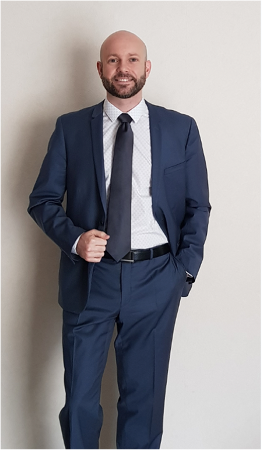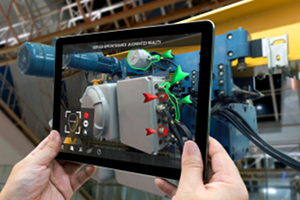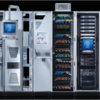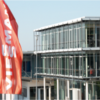New research project at MIPLM: IP Strategies for Predictive Maintenance Services
During the last decade, the important decrease of sensors’ cost, and their miniaturisation enabled the emergence of the Industrial Internet of Things (IIoT). The latter can be defined as “an internet of things, machines, computers and people enabling intelligent industrial operations using advanced data analytics for transformational business outcomes”[1].
The IIoT “represents the next big wave of innovation and will fundamentally transform industrial sectors of the economy”[2]. It offers huge opportunities for companies in all industries and particularly in the domain of maintenance. It allows companies to create hybrid business models, combining the benefits of operational efficiency with recurring income streams from digital services, permitting to make better decisions, having a better visibility along the value chain and improving productivity in other ways. According to McKinsey Global Institute the IIoT will bring an annual economic impact of $2.7 trillion to $6.2 trillion by 2025[3]. Gartner estimates a replacement of 1 out of 3 knowledge workers by 2020 due to the digital workforce and smart machines arising from the IIoT[4]. General Electric estimates that the IIoT could add a sizable $10 to $15 trillion to the worldwide gross domestic product (GDP), equivalent to the size of today’s U.S. economy, over the next 15 years[5].
But, regarding IIoT and Predictive Maintenance, “there is no business as usual. You won’t find it easy to get stakeholders aligned internally. Parts of the company will have entirely different ideas. Big companies can be tough places to effect change. Come to the table not thinking you have all the answers.
These are seismic shifts happening, enabling a completely different way of solving problems with completely different types of information. Companies that don’t recognize the magnitude of the change and don’t recognize how fast things are moving are going to lose. If it’s still business as usual for these companies, most of them are going to wake up in a few years and it will be over for them.”[6] “Technology innovation is necessary but not sufficient to disrupt the manufacturing sector. It is necessary to look beyond technology, at the people and processes that run your business. Cisco coined the term “Internet of Everything” to draw attention to the interaction between connected Things + Data + People + Processes”[7]. It should be emphasized that institutions and especially legal frameworks are also involved in this industrial revolution and this is what the present paper will investigate.
This research aims to analyse the Predictive Maintenance within its technical, economic and legal environments, and to evaluate, for each stakeholder, possible ways to manage costs, returns and Intellectual Property Rights upstream of the implementation of a Predictive Maintenance service, as well as downstream of this implementation.
 This research project is conducted by MIPLM graduate Alexandre Pourrier and supervised by Prof. Dr. Alexander Wurzer and Prof. Dr. Céline Meyrueis both CEIPI. Initially holding a Master degree in mechanical engineering from the INSA of Strasbourg, Alexandre completed his study with the courses in Patent Law and Trademarks and Design patents law at the CEIPI. After a first introductive experience in Hui Ye Law Firm at Shanghai, China, he came back to France to work for 5 years at Cabinet Roman, an IP law firm based in Marseille. Meanwhile, he also successfully passed the European and French Qualification Examinations in matters of Patent Law. After a specialisation in Marine Engineering and Energies at Centrale Marseille, he decided to practice as an in-house patent attorney within TechnipFMC that provides complete project life cycle services for the energy industry. Currently at this position, he handles patent matters for the subsea branch including technology watch, patentability assessment, prosecution of patent applications and freedom to operate. He also gives support to the legal department in the review of intellectual Property clauses in R&D contracts. His involvement in the knowledge transmission leads him to handle the training of the junior patent engineers, and to initiate IP awareness campaigns for R&D teams. Alexandre is also speaker at the Art et Métiers ParisTech introducing Intellectual Property to the master’s students in mechanical engineering. He recently decided to complete his knowledge with the master of Intellectual Property Law and Management of the CEIPI from which he just graduated.
This research project is conducted by MIPLM graduate Alexandre Pourrier and supervised by Prof. Dr. Alexander Wurzer and Prof. Dr. Céline Meyrueis both CEIPI. Initially holding a Master degree in mechanical engineering from the INSA of Strasbourg, Alexandre completed his study with the courses in Patent Law and Trademarks and Design patents law at the CEIPI. After a first introductive experience in Hui Ye Law Firm at Shanghai, China, he came back to France to work for 5 years at Cabinet Roman, an IP law firm based in Marseille. Meanwhile, he also successfully passed the European and French Qualification Examinations in matters of Patent Law. After a specialisation in Marine Engineering and Energies at Centrale Marseille, he decided to practice as an in-house patent attorney within TechnipFMC that provides complete project life cycle services for the energy industry. Currently at this position, he handles patent matters for the subsea branch including technology watch, patentability assessment, prosecution of patent applications and freedom to operate. He also gives support to the legal department in the review of intellectual Property clauses in R&D contracts. His involvement in the knowledge transmission leads him to handle the training of the junior patent engineers, and to initiate IP awareness campaigns for R&D teams. Alexandre is also speaker at the Art et Métiers ParisTech introducing Intellectual Property to the master’s students in mechanical engineering. He recently decided to complete his knowledge with the master of Intellectual Property Law and Management of the CEIPI from which he just graduated.
Here you can find a presentation on the research project: Intellectual Property and Economic aspects of a predictive Maintenance Service.
_________________________
[1] Industrial Internet Consortium (2016). Industrial Internet Investment Strategies: New Roles, New Rules, New Research by the Industrial Internet Consortium Suggests a New Breed of Venture Industrialists Are Reinventing Investment Models. page 3 [Internet] https://www.iiconsortium.org/pdf/IIC_Investment_Strategies_White_Paper-2015.pdf
[2] Industrial Internet Consortium (2016). Industrial Internet Investment Strategies: New Roles, New Rules, New Research by the Industrial Internet Consortium Suggests a New Breed of Venture Industrialists Are Reinventing Investment Models. page 2 [Internet] https://www.iiconsortium.org/pdf/IIC_Investment_Strategies_White_Paper-2015.pdf
[3] McKinsey Global Institute (2013). Disruptive technologies: Advances that will transform life, business, and the global economy. [Internet] http://www.mckinsey.com/~/media/McKinsey/Business%20Functions/McKinsey%20Digital/Our%20Insights/Disruptive%20technologies/MGI_Disruptive_technologies_Full_report_May2013.ashx
[4] Gartner Symposium ITXpo October 2013
[5] General Electric (2012). Industrial Internet, Pushing the Boundaries of Minds and Machines. [Internet] https://de.slideshare.net/GE_MC_India/industrial-internet-pushing-the-boundaries-of-minds-and-machines
[6] Robert Locke, Senior Vice President, Corporate Development, Tyco, Industrial Internet Consortium (2016). Industrial Internet Investment Strategies: New Roles, New Rules, New Research by the Industrial Internet Consortium Suggests a New Breed of Venture Industrialists Are Reinventing Investment Models. page 2 [Internet] https://www.iiconsortium.org/pdf/IIC_Investment_Strategies_White_Paper-2015.pdf
[7] Smart Factory Task Group (2017). Smart Factory Applications in Discrete Manufacturing, An Industrial Internet Consortium White Paper. page 21 [Internet] https://www.iiconsortium.org/pdf/Smart_Factory_Applications_in_Discrete_Mfg_white_paper_20170222.pdf



